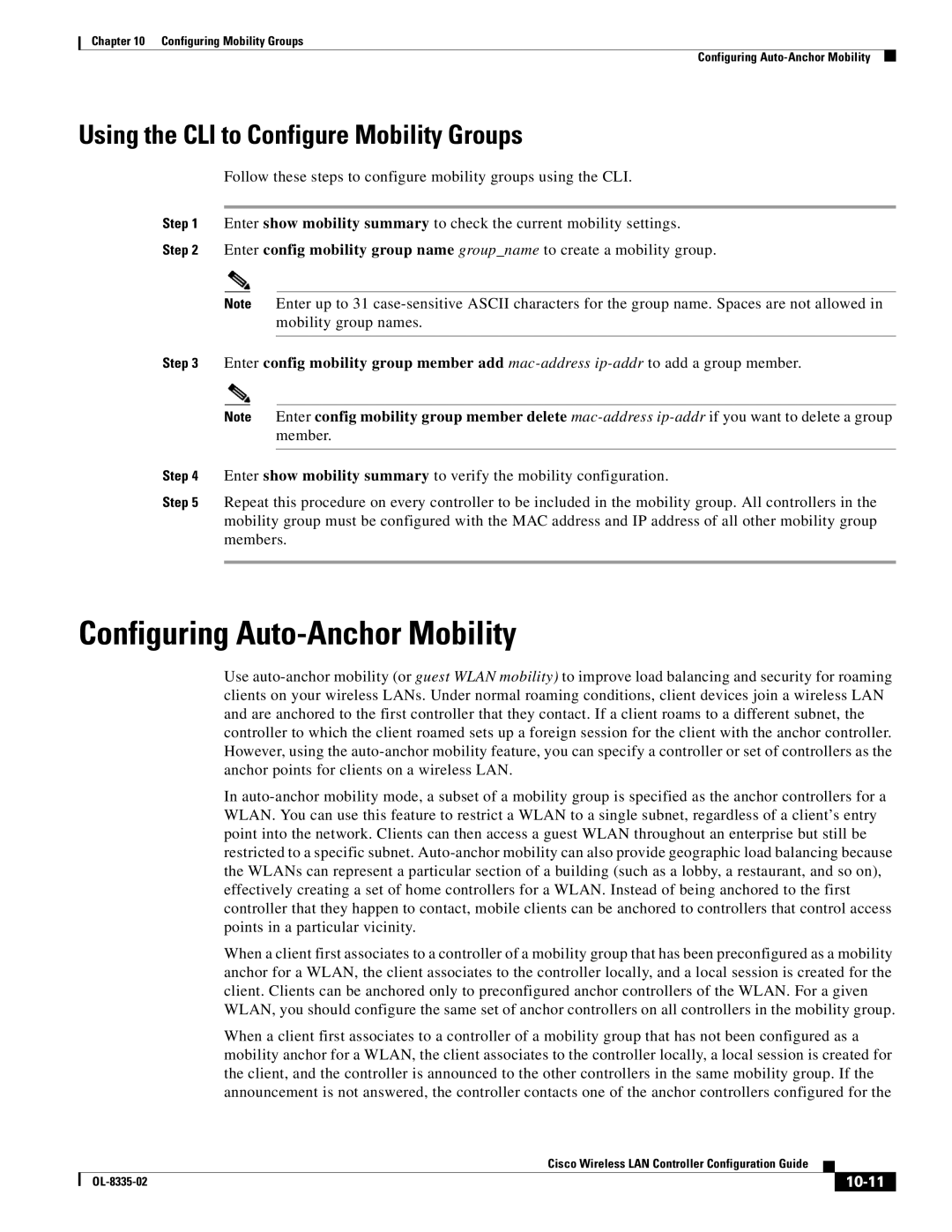
Chapter 10 Configuring Mobility Groups
Configuring
Using the CLI to Configure Mobility Groups
Follow these steps to configure mobility groups using the CLI.
Step 1 Enter show mobility summary to check the current mobility settings.
Step 2 Enter config mobility group name group_name to create a mobility group.
Note Enter up to 31
Step 3 Enter config mobility group member add
Note Enter config mobility group member delete
member.
Step 4 Enter show mobility summary to verify the mobility configuration.
Step 5 Repeat this procedure on every controller to be included in the mobility group. All controllers in the mobility group must be configured with the MAC address and IP address of all other mobility group members.
Configuring Auto-Anchor Mobility
Use
In
When a client first associates to a controller of a mobility group that has been preconfigured as a mobility anchor for a WLAN, the client associates to the controller locally, and a local session is created for the client. Clients can be anchored only to preconfigured anchor controllers of the WLAN. For a given WLAN, you should configure the same set of anchor controllers on all controllers in the mobility group.
When a client first associates to a controller of a mobility group that has not been configured as a mobility anchor for a WLAN, the client associates to the controller locally, a local session is created for the client, and the controller is announced to the other controllers in the same mobility group. If the announcement is not answered, the controller contacts one of the anchor controllers configured for the
|
| Cisco Wireless LAN Controller Configuration Guide |
|
| |
|
|
| |||
|
|
|
|
| |
|
|
|
| ||
